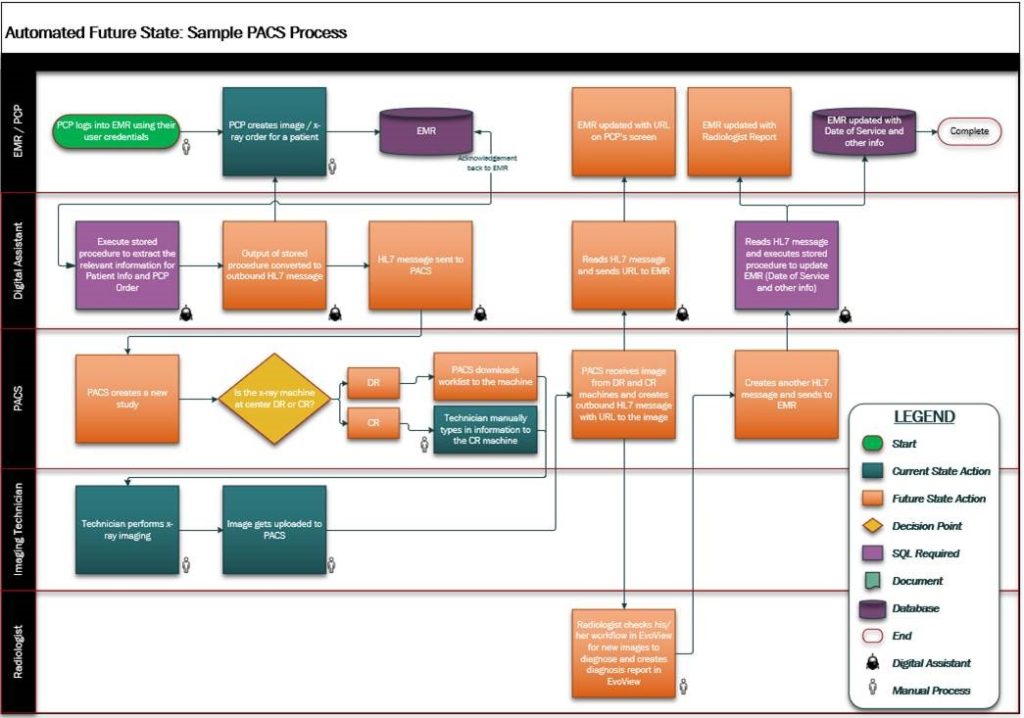Insight Paper October 6, 2020
Process Discovery in Preparation for Robotic Process Automation
Proper process discovery is the first step to a successful automation transition.
Robotic Process Automation (RPA) can provide exceptional value to any enterprise, small or large. Before introducing RPA to your organization, it is essential to have a proper process discovery system in place to uncover potential candidates for RPA – especially if there are many undocumented processes. Appropriately prioritizing these candidates for RPA can ensure that your organization has a strategy containing both “quick wins” and long-term transformation capabilities.
When considering a process for RPA, there are certain questions that must be asked during the discovery phase:
What is the level of repetitiveness?
Tasks that are highly repetitive, or even moderately repetitive with various (but finite) variations should be considered as strong candidates.
- If your organization is immature regarding automation, it is prudent to create a Proof of Concept (PoC) on a highly repetitive process with minimal variations to prove that RPA can be an effective solution for the organization.
- Processes that are unique with limited repetition or with no repeated processes are not appropriate for automation and should be disqualified.
- High ROI (Return on Investment) processes are those that are repetitive and take many manual hours to complete. Automation can lead to error/cost reduction and increased employee satisfaction which is important to consider when prioritizing.
How complex is the process?
Processes of various complexity can be automated. Prioritization of candidates from low to high complexity can allow an organization to determine which “quick wins” to hit, as well as which long term processes can deliver larger ROI.
What type of process is it?
Transactional processes are those that support the ongoing operations of an organization.
- This includes sales, purchasing, billing, and accounts billable/receivable.
- These processes are better candidates for early RPA automation compared to more analytical process (metrics providing business intelligence).
- A mix of a transactional and analytical process can still be automated, but the complexity will increase. Fully analytical tasks become better candidates upon reaching RPA maturity and including enhanced BI/AI/Machine Learning as part of your organizational toolbox.
Standardization
As mentioned earlier, processes that are unique are not recommended. The more commonality there is each time the process is run, the more successful the automation will be. Largely/completely standardized processes with active management should be classified as “quick wins” or early candidates for RPA/PoC’s.
Human Interaction/Handoffs
Processes often have multiple people involved – the more interactions, the greater the chance for error. Processes with any level of interaction can have a strong ROI; however, it is vital to carefully record each step/handoff in the process. Each one of these handoffs will have a “trigger” preceding the handoff and that trigger will have to be replicated by RPA in the future as part of the automated process.
Process Mapping
As an accumulation of the above: Each process under consideration must be mapped to a granular level.
- Understanding the “Source of Truth” (origin of the process/data source) should be a primary objective when undertaking process discovery.
- Each current manual action must be reviewed to understand the repetitiveness as well as the overall complexity and level of standardization.
- A completed process map encompasses the current state of the process which can lead to ad hoc process improvement prior to automation.

The better the process is documented, the easier the automation implementation will be. By considering the above, any team can successfully map and prioritize candidates for RPA.

